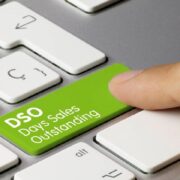Backtesting refers to the process of applying trading rules to a set of historical trading data in order to gauge the trading plan’s effectiveness. If you’re new to the concept of backtesting, here are some rules that you should always keep in mind.
Backtesting Rule 1
You have to take into account the broader market trends in the time frame a specific strategy was tested. For instance, if a strategy was only backtested from 1999 to 2000, it may not really perform well in a bear market.
It is usually a wise idea to backtest over a long time frame encompassing several different types of market conditions.
Backtesting Rule 2
Also take into account the industry in which the backtesting took place. Here’s an example, if the a broad market system is tested with a sector or industry consisting tech stocks, it may fail to do well in different sectors.
As a rule, if a strategy is aimed toward a specific genre of stock, limit that sector into that genre. In all other cases, maintain a huge universe for testing purposes.
Backtesting Rule 3
Volatility measures are crucial to consider in developing a trading system. This is especially true for leveraged accounts, which are subjected to margin calls if their equity drops lower than a certain point. Traders should try to keep volatility low in order to lower down risks and enable easier transition in and out of a given stock.
Backtesting Rule 4
The average number of bars held is also very important to watch when developing a trading system. Although most backtesting software includes commission costs in the final calculations, that does not mean that you should ignore this statistic.
If possible, you should raise your average numbers of bars held, and this can reduce commission costs and improve your overall return.
Backtesting Rule 5
Exposure is also a double-edged sword. Higher exposure can result to higher profits or higher losses, while decreased exposure means lower profits or lower losses.
Generally, it is better to keep exposure below 70 percent to diminish the risk and enable easier transition in and out of a given stock.
Backtesting Rule 7
The average gain/loss statistic, combined with the wins-to-losses ratio, can be useful for determining the optimal position sizing and money management using techniques like the Kelly Criterion.
Traders can take bigger positions and decrease commission costs by increasing their average gains and increasing their wins-to-losses ratio.
Backtesting Rule 8
Annualized return is used as a tool to benchmark a system’s returns against other investment venues. It is important not only to look at the overall annualized return but also to take into account the higher or lower risks.
You can do this by looking at the risk-adjusted return, which accounts for various risk factors. Before a trading system is adopted, it must outperform all other investment venues at equal or less risks.
Backtesting Rule 9
Backtesting customization is very important. Many backtesting applications have input for commission amounts, round or fractional lot sizes, tick sizes, margin requirements, interest rates, slippage assumptions, position sizing rules, same-bar exit conditions, stop settings, and many others.
In order to get the most accurate backtesting results, it is important to tune these settings to mimic the broker to be used when the system goes live.
Prices in the Forex market can move excessively rapidly, especially during the volatile periods. Before entering a trade, it is essential for you to know what you stand to gain or lose from it. Forex Profit Calculator is the simplest way to calculate profit or loss while trading forex.













Comments